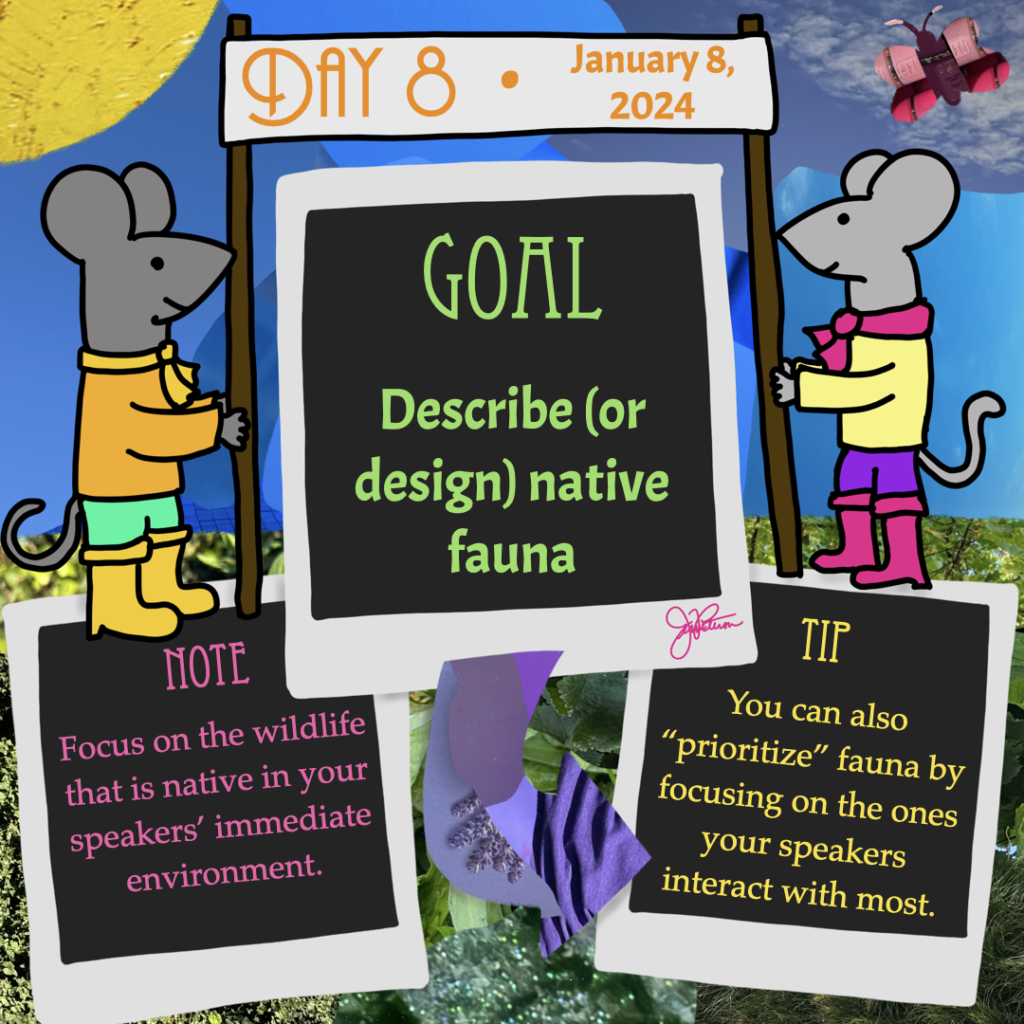
Goal: Describe (or design) native fauna
Note: Focus on the wildlife that is native in your speakers’ immediate environment.
Tip: As with the flora, you can “prioritize” fauna by focusing on the ones your speakers interact with most.
Work focus: Create/Make/List
Now that you have selected the types of vegetation that fill your conworld setting, you get to shift your focus to the native fauna—the wildlife found in the area and, perhaps, other sentient beings of different species (they would not really count as “fauna,” but they would be important to note as you continue building out your conworld!). As with yesterday’s prompt, you should focus your notes on the life native to the local area of your speakers’ immediate environment, and you can prioritize your list by the fauna your speakers would interact with most.
If your conworld is set on Earth or an Earth-like location, you may simply be able to list the types of fauna in the area. However, if you are creating a fictional world, you should either sketch out the life forms or list features to describe what they look like.
As you think about what life forms will inhabit the area with your speakers, also think about the types of interactions your speakers will have with them. Not everything on that list may be a pleasant interaction. Some of the life forms we interact with most are the “pests” of life—the gnats, mosquitos, flies, ants, and wasps of our world. Other entries on your list may be dangerous life forms that your speakers want (or need) to avoid, such as predators or venomous snakes. And some of the life forms may serve as a source of food for your speakers (thus, the interaction will not be so welcome from the viewpoint of the fauna…).
On the other hand, your speakers may share their home spaces with fauna as companions, such as having a wolf or a lynx as a pet, companion, or familiar. Birds may deliver messages for your speakers. Squirrels may leave piles of nuts for your speakers in exchange for acorns that your speakers collect and leave for the squirrels. You can select fauna we have here on Earth and give them more sentient qualities. Your speakers may be able to communicate with them in ways that we cannot communicate with the wildlife around us. (That could even extend to the flora you created yesterday. For instance, trees may purposefully stretch and grow their branches to create structures for your speakers to live under.)
These notes on the types and importance of interactions will be helpful information for later stages of language development and are important whether the fauna you list exist in our world or are entirely fictional.
